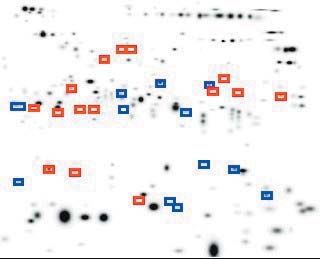 Tender, juicy, full of flavour; these are top consumer criteria for palatability of meat and are the focus of genomic and proteomic studies in the Meat Technology Department at The National Food Centre (NFC). While research to date has provided blueprints for meat production these traits are highly variable, making it difficult to produce meat of guaranteed eating quality. The relationship between tenderness and muscle biochemistry and ultrastructure has been quite well described, providing the basis for improvements in quality. However, further advances are unlikely without incorporating more detailed molecular studies. Therefore the main aim of this research is the application of genomic and proteomic tools to study the relationship between meat quality traits (tenderness, marbling etc) and gene expression, protein expression and DNA polymorphisms.
Tender, juicy, full of flavour; these are top consumer criteria for palatability of meat and are the focus of genomic and proteomic studies in the Meat Technology Department at The National Food Centre (NFC). While research to date has provided blueprints for meat production these traits are highly variable, making it difficult to produce meat of guaranteed eating quality. The relationship between tenderness and muscle biochemistry and ultrastructure has been quite well described, providing the basis for improvements in quality. However, further advances are unlikely without incorporating more detailed molecular studies. Therefore the main aim of this research is the application of genomic and proteomic tools to study the relationship between meat quality traits (tenderness, marbling etc) and gene expression, protein expression and DNA polymorphisms.
 2-D electrophoresis image. Spots squared in blue are specific to tender meat while spots over-expressed in tough meat are squared in red.
Gene expression analyses are made possible through cutting edge technologies (microarrays, real time PCR) in addition to more traditional methods. Both large-scale bovine and porcine microarrays are used while more targeted arrays will be created from suppressive subtractive hybridisation libraries. Known DNA polymorphisms are being assessed for relationships with quality traits. This is the first time this has been carried out on Irish beef and pork and a significant association has been observed between tenderness and a single nucleotide polymorphism (SNP) in the calpain I gene. Following proteomic studies, seven new potential biomarkers for tenderness have been identified and an immunoassay for a potential tenderness marker is being tested at factory level by NFC researchers.
2-D electrophoresis image. Spots squared in blue are specific to tender meat while spots over-expressed in tough meat are squared in red.
Gene expression analyses are made possible through cutting edge technologies (microarrays, real time PCR) in addition to more traditional methods. Both large-scale bovine and porcine microarrays are used while more targeted arrays will be created from suppressive subtractive hybridisation libraries. Known DNA polymorphisms are being assessed for relationships with quality traits. This is the first time this has been carried out on Irish beef and pork and a significant association has been observed between tenderness and a single nucleotide polymorphism (SNP) in the calpain I gene. Following proteomic studies, seven new potential biomarkers for tenderness have been identified and an immunoassay for a potential tenderness marker is being tested at factory level by NFC researchers.
Ultimately, it is envisaged that this research will provide methods of predicting, controlling and enhancing meat quality traits to meet market/consumer requirements. Diagnostic tests for quality may be useful both during the life of the animal (to guide production systems) and after slaughter (to guide processing systems, predicting meat quality at critical points). Diagnostic tests based on DNA polymorphisms can provide the basis for Marker Assisted Selection (MAS) breeding programmes.
Other research partners include Michigan State University, National University of Ireland-Dublin, National Diagnostic Centre-Galway, Moorepark-Teagasc and INRA-France. Funding is mainly provided through the Department of Agriculture and Food, Enterprise Ireland and Teagasc.
Contact: Dr Anne Maria Mullen, Head,
Meat Technology Department,
The National Food Centre, Teagasc, Ashtown, Dublin 15;
Tel: (01) 805 9500;
E-mail:
[email protected]
;
Web:
http://www.teagasc.ie/nfc/
|


